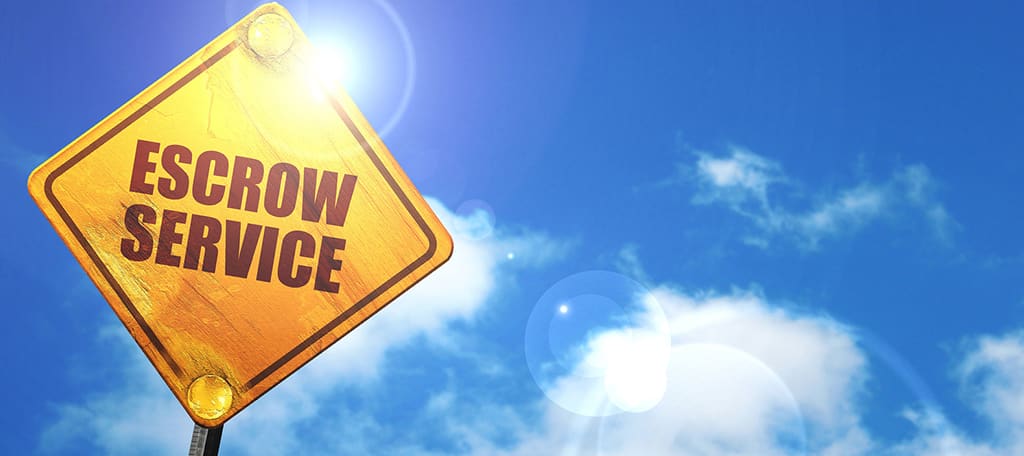Have you ever been paying a domain renewal fee and thought, “I’m not using it, I should sell that domain name.” I know I have. You may not be sitting on a million-dollar domain name, but you could very well own one that has some value. So let’s talk about how to sell domain names.
As I type this, there are over 1,500 TLDs. You can register a domain on about 1,000 of them. So clearly there is no shortage of available domain space. Yet the secondary domain market is thriving.
Why? Because people still want a domain name on a small handful of specific TLDs, .com being the most desirable.
The TLD is the part of the domain that comes after the last dot. TLD stands for Top-Level Domain. So com, net, and org are TLDs. As are club, store, and chat. Technically they are “generic” top-level domains, but we’re just going to refer to them as TLDs.
How to Sell Your Domain Name

Hi, my name is Michael, and I an a domainaholic.
I’m in recovery now, but at one time I owned more than 500 domain names. I realize that’s small potatoes compared to the big domain name holders, but during that time I learned a thing or two about buying and selling domains.
The main thing I learned is that it pays to be patient. It can take a long time to sell a domain name.
But, there are steps you can take to accelerate the process. The more aggressively you “market” your domain, the quicker you’ll sell it. And if you do it right, you’ll reap the maximum amount the domain can bring.
Whether you go about selling your domain name in an aggressive or more passive way, the basic steps are the same, so let’s get to them.
Determine the Value Before You Sell the Domain

One of the most common pitfalls that we run into when trying to sell a domain name is believing it is more valuable than it actually is. Reading about those million-dollar sales can lead us to believe we’re sitting on a goldmine when our domain may only be worth the cost of a nice dinner.
But hey, at least getting the cost of a nice dinner is something. If we don’t temper our expectations, it’s likely we’ll wind up with nothing. Listing a domain for more than it’s worth rarely (okay, never) leads to a sale.
There are sites and services out there that will provide you with an estimate of a domain’s value. Those are only estimates though, based on algorithms. And like all algorithms, they are generic, not specific.
I prefer to look at comparable sales. It isn’t like selling on eBay where you can see what the exact same product sold for. Domain names are unique, so you have to look for roughly comparable names.
Sites like DNJournal, estibot, DNPric.es, and NameBio provide information on what domains are actually selling for, so they are a good place to start.
There are also rules of thumb you can apply. Like if ggexample.net sold for $100, you can assume that you could reasonably ask for 5 to 10 times more for ggexample.com.
Those multiples work the other way too. If you own a .net or .org version of a .com that sold for $100, you can expect to get 5 to 10 times less than the .com sales price for your domain.
Other than comparable sales, here are some things to take into consideration when pricing your domains.
Things That Can Have a Positive Impact on Domain Value
- If the domain is a .com
Despite the availability of hundreds of new domain extensions, the old standby .com is still king. When you look at the top 100 domain sales of all time, 96 of the 100 domains were .com. - If it is short
Generally speaking, the shorter the domain, the higher the price. One, two, or three-letter domains are historically among those that bring the highest prices. - If it is easy to spell
Domain names that include common words or regular abbreviations will fetch a higher price. - If it is a single “dictionary” word
Along with short domains, generic single word domains (shop.com, pizza.com, clothes.com, etc.) also top the charts with all-time high sales numbers. The logic here is obvious: there are a limited number of generic words that everyone knows.
The average native English speaker only knows or uses about 20,000 words. Maybe half of those are generic. There are 142.5 million .com domains currently registered, which means only 0.007% of all registered domains are generic English words that would be known to most native speakers.
If you own one of those domains, you have a rare quantity that has commensurate value. (commensurate.com, on the other hand, is available for a mere $13,000.)
- If the domain is a .com
Things That Can Have a Negative Impact on Domain Value
This can be pretty much summed up as anything that is the opposite of the positives list. So:
- Any TLD other than a .com
While Google used the TLD as a ranking factor in the old days, they say now that they treat all (okay, most) TLDs equally. So there isn’t any reason that a .ink or .xyz couldn’t be just as valuable as a .com. But they aren’t. They are “sellable” though, but temper your expectations as to the prices they may realize. - If it has too many characters
I find this one interesting as well since few of us type domain names into web browsers anymore. We’re far more likely to click a link, either from a search engine or a referring site.
Even if you do have to type a domain, your browser probably remembers it and you don’t have to type more than a few characters. So why do domains with fewer characters still demand a premium price?
Whatever the reason, they do. So the easy thumbnail equation is: the longer the domain, the lower the sale price. - Difficult to spell (or spells something you don’t want it to spell)
Even a relatively short domain can be worth considerably less than a comparable domain if it is difficult to spell. Such as words where ‘i’ and ‘e’ can be mixed up.
And as far as a domain spelling something you don’t want it to spell, you’ve probably seen examples of that. If not, try removing the spaces to turn “American Scrap Metal,” or “Experts Exchange” into a domain. You can see the possible problems there. - If the domain is made up of multiple words
Combining two words is actually one of my favorite tricks for finding a .com domain that’s available to register. But when it comes to reselling, multiple words can work against you. It’s even worse if your domain contains hyphens or numbers. I understand the temptation, but you should never buy or register a domain name with hyphens.
- Any TLD other than a .com
Why Is .com Still King?

The internet started with seven top-level domain extensions (com, net, org, int, edu, gov, mil). Of those seven, you, as an unaffiliated early Internet user, could only register a domain on .com (and doing so was no easy feat). The others were reserved for institutions or computer networks.
It’s worth noting that while .org and .net were intended to be restricted to non-profit organizations and computer networks, those restrictions were never enforced.
It’s interesting that .com retains so much of its old-school glam luster since most web or internet users weren’t even around when .com was the only game in town. In fact, more than a billion internet users weren’t even born when the first “new” TLDs (biz, info) were introduced in 2001*.
But much of the early writing about the Internet used, or centered around, the phrase “dot com.” All of the early Internet businesses were on .com domains (so most internet users would have just assumed that any new business site would also use a .com domain). When the bottom fell out of the Internet economy in 2000, it was referred to as “the dot com bubble” bursting.
So it seems to me that history is the only thing propping up the perceived value of a .com domain. There’s no technical or practical reason for a .com to be worth more than any other TLD.
After You’ve Priced it, Let’s Sell the Domain
Okay, I know, that was a lot of information. But properly pricing your domain is arguably the most important part of the sale.
If you’re overpriced, nothing we’re going to talk about from here on out will matter because your domain won’t attract buyers.
So let’s get your domain ready to sell. Here are six steps to sell a domain today.
1. Let the World Know That the Domain Name Is for Sale Using the Domain Name Itself

You’ll need a website for any domain name that you want to sell (yes, it sounds obvious, but not everyone bothers). This is one place you can gain an advantage over a large domain seller. Where they will have generic pages on the domains, you can create something more attractive.
You don’t need anything fancy, just a single page with contact information, or better yet, a contact form. Make the page as unique as the domain name. Incorporate color or imagery that lines up with the name whenever possible. Make it personal, let potential buyers know there are dealing with an individual, not a corporation.
If you’re selling multiple domains you can keep your hosting costs down by using multi-domain reseller accounts.
2. Make Your Contact Information Public in the WHOIS Database

This is a key point – if you can do it. I’ve sold domains I never intended to sell simply because someone contacted me using WHOIS information and made an offer.
But the rise of domain “privacy” is making WHOIS a less-reliable way to publicly provide contact information for a domain. Many registrars turn on privacy by default. And if your domains are registered through certain large registrars, it isn’t even possible to publicly display contact information anymore.
Check with your registrar and see if you can expose at least an email address in the public WHOIS database. If not, your registrar may offer email forwarding from WHOIS records.
3. To Market, to Market (Finally), A.K.A. Where Can I Sell a Domain Name?

Now you are armed with your optimum sales price, your domain is visible, and your contact information is attached. It’s time to start shaking the trees for a buyer.
Rather than talking about the dozen or so possible ways to sell a domain name, let’s talk about the two that actually work.
4. Listing Your Domain for Sale on Domain Marketplaces

The best domain selling sites are the best domain buying sites, and those are domain marketplaces.
Marketplaces are most people’s first and last stop when selling domains. The obvious advantage here is that everyone browsing a domain marketplace is a potential buyer.
On the downside, it can be hard for the average domain to be noticed in a large marketplace. Consequently, sales can take time.
But even if you intend to sell your domain at auction, you should still list it with the major marketplaces. Those being Afternic, Sedo, Snap[NAMES], and Flippa.
If your pricing is close to market rates and your domain is attractive, these marketplaces should net you some offers.
Which reminds me, be prepared to negotiate. While it isn’t unheard of for a buyer in a marketplace to pay your asking price, it’s more likely that they will make you an offer below that value.
5. Sell Your Domain at Auction

Most of the previously mentioned marketplaces have online auctions. If you’re going the online route, don’t dismiss eBay. I’ve sold a few domains on eBay without issues.
But did you know there are also live auctions where domains are sold? It’s true, and they are the best place to sell domains. There used to be a lot of live domain auctions, but these days most of the live auction action is at Heritage Auctions and the annual NamesCon conference.
It’s more difficult to get your domain into a live auction, as they tend to feature premium (i.e. expensive) domains, and the vetting process is more involved. But if you have a good domain, you may be able to get into a live auction.
Live auctions are great because they are fast, and if the action is good, you can realize higher prices than you ever could online.
6. Use an Escrow Service for Payment

You’ve sold your domain, congratulations. Now you have to get paid.
In the old days, selling a domain name was a troublesome proposition. You had to trust the buyer and the buyer had to trust you, the seller. There was not an easy mechanism in place to protect both parties.
Now we have escrow services that are (relatively) inexpensive and very easy to use. Escrow services are neutral third parties that hold and process payments. Some domain marketplaces have built-in escrow services for domains sold through the site.
But if you didn’t use a marketplace, you’ll have to take care of setting up escrow yourself. There are a few online escrow services, but you can’t go wrong with the established leader, escrow.com.
Selling Domains and Selling Websites Are Two Different Things
This article has talked about domain name sales, not website sales. But, it’s worth taking a minute to talk about selling domains attached to websites.
Sometimes when you see that a domain name sold for a certain price, that sale price included the website and its files attached to the domains. The value of an existing website is easy to calculate, usually based on the income earned by the site. The domain name can be part of that value, but most of it is based on the amount of money generated.
Websites are often specifically developed to be sold. That can start with an established site that is given a quick cosmetic overhaul and flipped, or it can start with only a domain name.
The seller buys a keyword-based domain and then creates content based around that keyword to try to attract traffic to the site. If they can establish enough traffic to create advertising revenue, they have a sellable website.
If that sounds like a speculative and potentially costly way to make a website sale, it is. But the risk can be reduced by studying keyword popularity, employing successful SEO tactics, learning how to create—or discover—attractive content, and keeping your hosting costs low with multi-site reseller accounts.
Domain Names Will Always Have Value

Will they though?
I wouldn’t be so sure.
As long as we continue name-based Internet addressing, certain domain names will have value. But trying to predict the future of the Internet is like predicting which number a roulette ball will land on. All you can do is guess, and you’ll be wrong most of the time.
For that reason, I wouldn’t hold domain names as long-term investments, believing that I was going to fund my retirement on domain sales. There are too many unknowns. Too many variables. Eventually, some 13-year-old kid in Iceland or São Paulo will come up with a technology that makes domain names obsolete.
Even if the technology stays the same, what is considered a valuable domain name can certainly change. The biggest domain selling payday I ever had was a $19,000 live auction sale in 2008. But that was a long time ago, and I’m pretty sure it would be tough to get a couple of thousand dollars for the same domain name now.
Timing can be important when considering when to sell a domain.
You Just Never Know What May or May Not Sell
I’ve had the .net and .org versions of my name – which is pretty common – up for sale for years, and so far, no takers. But I suppose even though it’s a common name, it still requires a very specific buyer.
But I’ve also had a four-letter dictionary word domain up for sale for years without any takers. Its problem? It’s a .net. If it was a .com, I could have sold it many times over.
We talked about managing expectations earlier, and that’s certainly a key factor in selling domains. Being prepared will give you every advantage. As for patience and expectations, well, those are up to you.
If you decide to sell or have a good domain selling story, let me know in the comments. I’m interested in hearing from you.
*30% of the world’s population is under the age of 18, and there are 4.95 billion Internet users, so 1.49 billion of us are under 18.


Great Article
Amazing article. I sell my first domain with NameSilo and I got really good deal Thank you 🙂